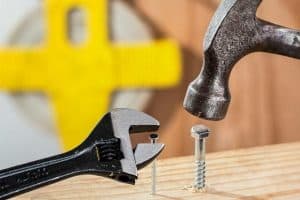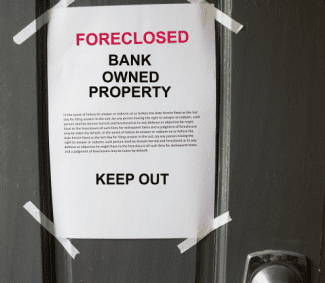The Guide to Common Household DIYs

Building Your DIY Toolkit
If you are going to fix things, you are going to need tools. And if you are reading this, chances are you don’t have a toolkit already assembled. Not a problem! Building your first toolkit doesn’t have to be an expensive or difficult task. You can find discounted supplies at government auctions, pawn shops, thrift stores, and even Craigslist if you know how and where to look. If you prefer to buy new, look for sales especially around holidays like Father’s Day and Labor Day.
What You’ll Need:
- A tool box or kit to hold everything together.
- A work light or flashlight. An LED headlamp gives you light while keeping your hands free.
- A screwdriver set with both flat- and Phillips-head screwdrivers in various sizes.
- A solid claw hammer weighing in at about 1 lb.
- A tape measure to measure twice before you cut once.
- Locking, adjustable pliers that can double as a clamp.
- An adjustable crescent wrench you can use in multiple projects.
- A level for hanging and cutting things straight.
- A utility knife with built-in blade storage.
- An electric cordless drill– it may be your biggest investment, but it’s worth it.
- A hacksaw and backup blades for replacement.
- Safety goggles and gloves
- Rags and painter’s tape
- Pencils
- WD-40
- Super glue and duct tape
DIY Projects for the Home
Whether you need to fix a broken door or you want to install extra storage, putting in a little elbow grease around the house or apartment is a great way to feel more invested in your place. When you put work into something, an attachment grows. This is what makes a house a home.
Here are some of our favorite DIY projects you can try:
- Install halogen track lighting in hallways to illuminate the space and highlight photos and paintings on the walls.
- Breathe new life into a room by painting an accent wall or adding pattern with wallpaper.
- Update your laundry room with a folding ironing board, extra storage, and non-slip floors.
- Replace old and shoddy windows with new, better functioning windows that are energy-efficient and reduce your power bills.
- Install new faucets in the kitchen and bathroom for an upgraded look and better function.
- Fix sticky and unbalanced doors by planing the wood and replacing hardware.
- Use chalkboard or whiteboard paint to make a family message board in the kitchen or another common room.
- Re-caulk your tile in the bathroom and kitchen.
- Fill empty vertical space with storage, lighting, or decor.
- Replace an outdated kitchen backsplash with tin tile or peel-stick tiles.
- Install rollers inside kitchen and bathroom cabinets for easy access and increased storage.
- Use recycled wooden pallets to make a number of home and garden accessories.
- Build floating shelves and hang them on the walls for decorations and minute storage.
Whether you rent or own, it feels good to take care of your home. Doing it yourself isn’t always best– if you may damage structures or harm yourself, you need to call a professional. But if you want to DIY, you need the tools first. Save money setting up a toolkit by looking for used materials. Once you have the goods, you can tackle a number of DIY projects around the house from installing lights to building furniture out of recycled wood.
Author
Mr. Murphy first got into doing DIY projects to save money, but over time he has developed a real passion for this hands-on, intensive work.















 Accessibility
Accessibility